TAG Precision—American-made RMR Plate for Kimber
For users of optics-ready Kimber 1911 and 2K11 pistols, TAG Precision has announced…
For users of optics-ready Kimber 1911 and 2K11 pistols, TAG Precision has announced…
Fountain Valley, CA—SureFire, LLC, manufacturer of the world’s finest—and most innovative—illumination tools and…
Shinenyx—creators of a cutting-edge fusion of digital night vision and thermal imaging technology—has…
The Mod-Navy Qual I’ve been doing this qual (or drill, or whatever the current nom…
• Built for road trips and off-road use• Manual transmission equipped• Wrapped in MultiCam Arctic…
I designed the Button Man to give shooters a low-round-count, low-light-engagement drill that involved both…
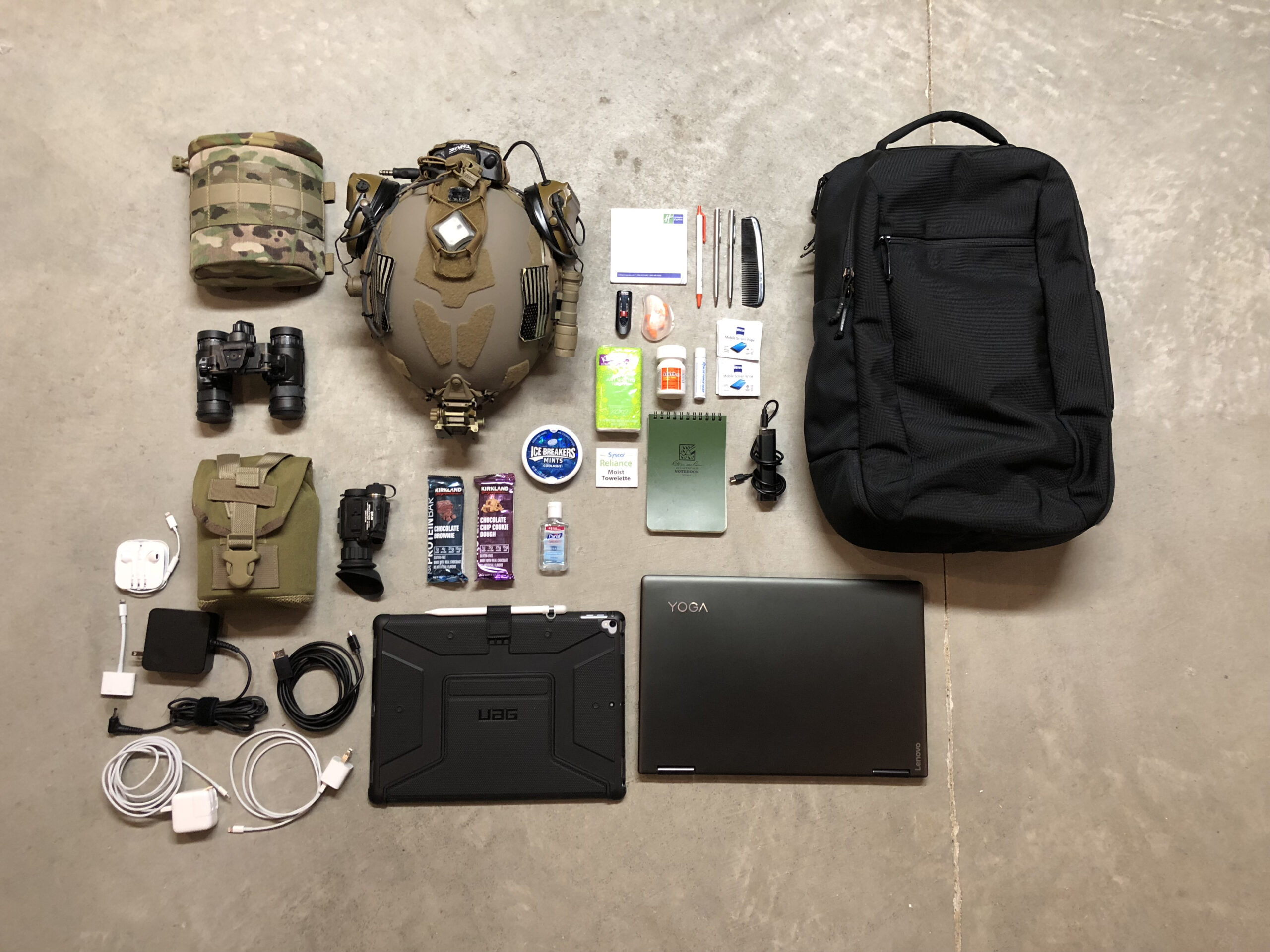
Few things are as stressful as air travel these days. You tend to see people at their worst: flared tempers, sickness, horrible hygiene and inconsiderate attitudes. What’s more, you’re worrying about delays and making your connection, not to mention whether your checked luggage will make it. This is compounded exponentially when traveling with guns, gear and other sensitive equipment. As someone who has spent over a decade flying commercially with tons of expensive gear, I know a thing or two about travel survival..
In today’s world of high tensions, hyper sensitivity and extreme politics, traveling with guns and gear can be a daunting task, to the point where some people would rather avoid it altogether and just drive. While simply hitting the road is often preferable, sometimes air travel is a necessity. How do you fly without breaking rules, getting thrown in jail, having stuff confiscated, being put on a no-fly list—and most importantly, making sure all your gear arrives safely with you?
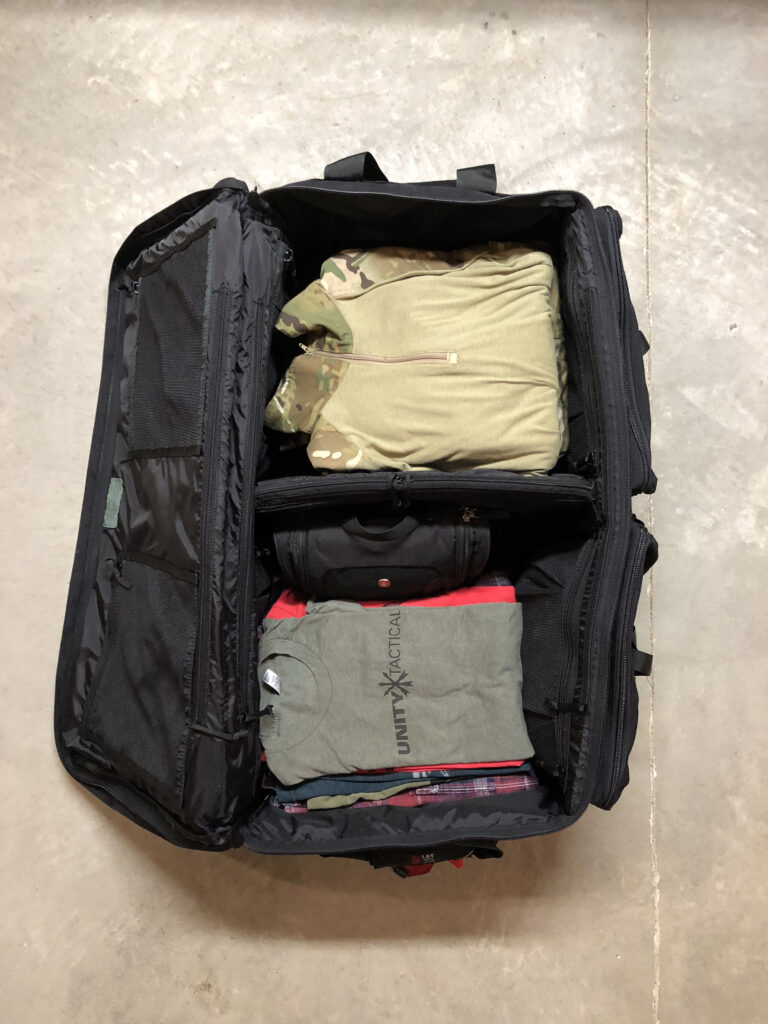
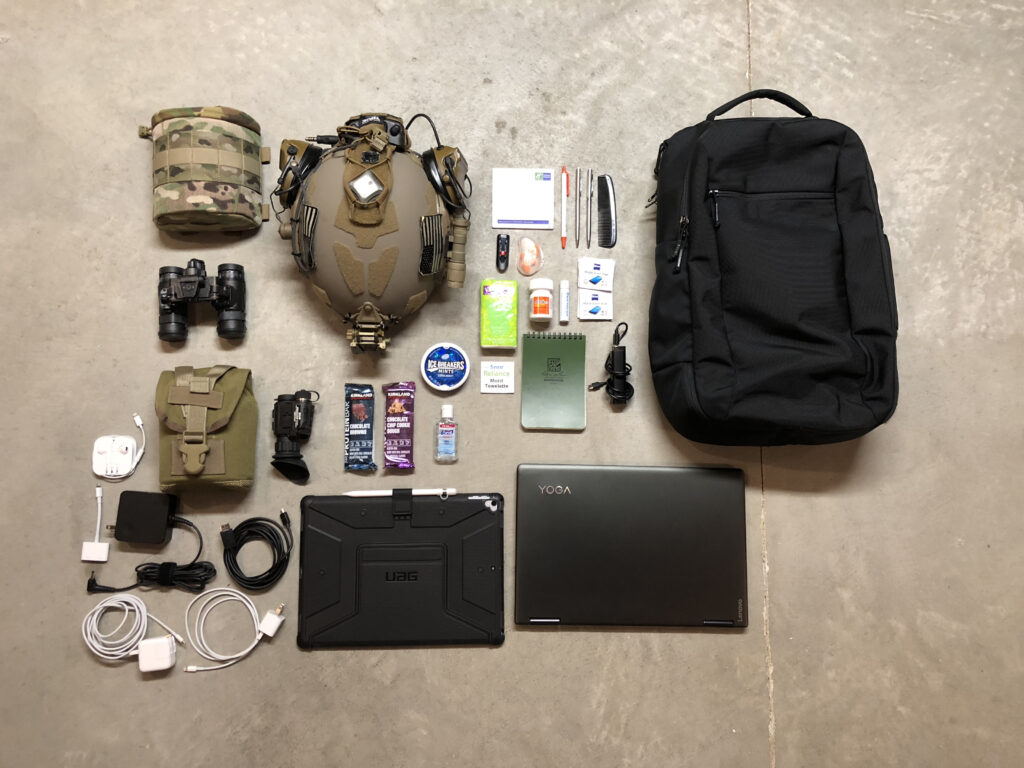
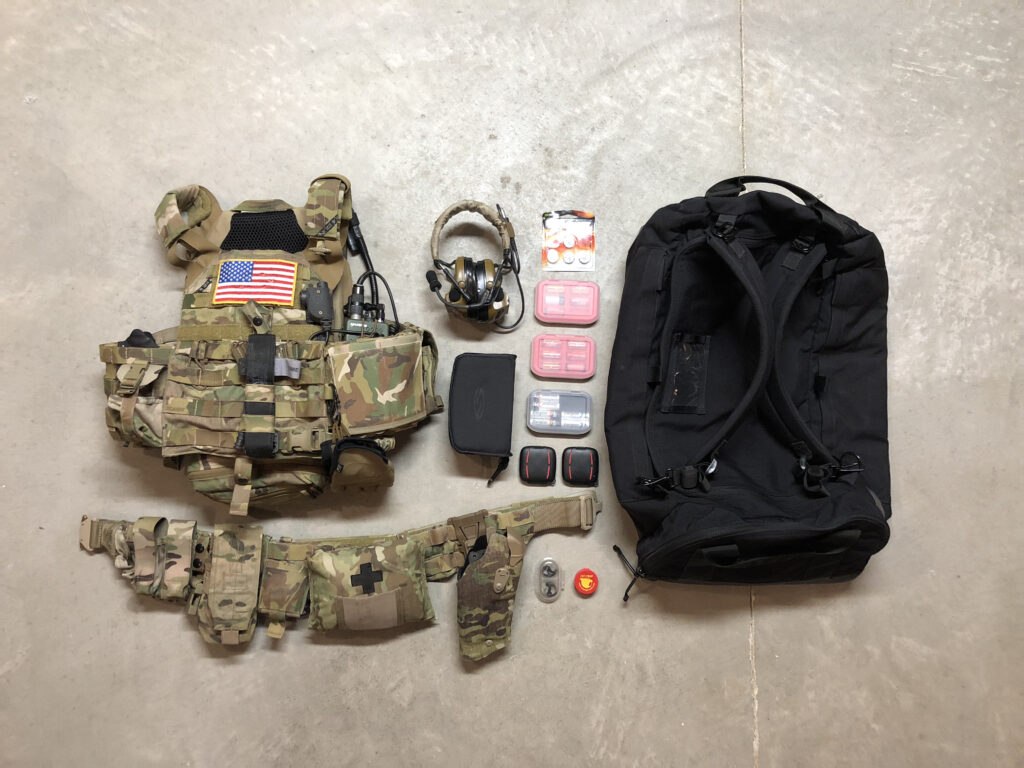



The first thing to do is make a packing list and segregate items based on whether they can go in a carry-on bag. Obviously, no weapons, weapon parts or ammunition can fly in the cabin. These items must go in a locked, hard-sided case in checked luggage. This also includes knives, batons, nunchucks, pointy sticks, and so on. Firearms must be unloaded and ammo must be stored in its original factory packaging. No more than eleven pounds of ammo total can be flown. If you are attending training, you should have ammo shipped directly to the venue. Just because you have a badge, military ID, Zombie Hunting Permit, or Starfleet Library Card doesn’t mean an exception will be made.
I have used Pelican/Storm hard cases for years and highly recommend them. They are proven tough and will protect your gear if properly packed. If you’re only traveling with a pistol, you can use a smaller locked gun case inside a larger checked bag. But the case must be locked with padlocks—NOT TSA locks. Weapons must be secured with a lock that allows you and you alone access.
I’ve also spent many years flying with full tactical kit and have packing down to a science. But let’s plan our trip before we start packing. Traveling with guns and gear means you’ll need to check at least one piece of luggage. Most likely you’ll have a gun case and a standard bag for clothing. These days, you need to pay at least $25 per checked bag on most airlines. There are also overweight baggage fees that range $100-150 for any luggage weighing over 50 pounds. If you’ve got a case full of guns and ammo, you’re most likely going to reach or exceed that weight limit. A single pound over will incur that added fee.
Before packing any of this gear into my bags, I make sure I have removed all pokey/stabby items, weapons, empty shells, etc. Every pocket, fold, and pouch must be interrogated visually and digitally to make sure a spent 5.56 casing isn’t hiding somewhere (yes, that will get you jammed up).
If you’ve got a lot of clothes, shoes, and other stuff packed into your suitcase, you could end up with two overweight fees totaling up to $350 on top of your ticket cost. This is the first reason I am going to suggest buying a first-class fare. First class has no baggage fees and no weight fees. Most first-class tickets cost around $200 more than economy fare, so the math makes sense. Second, first-class passengers get priority tags placed on their checked luggage, so it’s more likely that these bags will make connections and arrive at baggage claim when you do. Finally, first-class passengers get priority boarding. This is beneficial when you have expensive gear in your carry-on bags and need guaranteed overhead bin space. If you don’t opt for the first class, at least consider the priority boarding upgrade.
Another thing to consider is layovers. Unless you live in a hub city, the chances of your odyssey having a layover are usually 100%. Nobody likes spending more time in airports than they have to, but that’s exactly what will happen if your bags don’t make the connection. I never book flights that have less than 1.5 hours in between. Airlines run notoriously late, so the layover gives me an extra cushion if I have to rush to my gate.
If you have one of those 40-minute layovers, there’s a decent chance your bags will be tossed on the next flight if the gates are not next to each other. There are millions of moving pieces working in concert to get you and your luggage where you need to go and it doesn’t take much to throw something off. Hope for the best, but prepare for the worst. I also try to get the first flight out in the morning. Experience has shown that the first flights out are often the most on time because they aren’t waiting on another plane to fly in from across the country. So I’m most likely to make my connection flight and get where I’m going while there’s still daylight.
Now it’s time to start packing. After separating weapons and ammo, I identify the sensitive or expensive gear I want to maintain control of. This includes as much of my tactical gear as possible. Your TSA-approved locks can be opened by a TSA key, which is supposed to only be possessed by TSA agents. But almost every baggage thrower on the tarmac has one, so your TSA lock is worthless. If you have some super expensive luggage set, or a giant Multicam deployment bag, you’re identifying your luggage as a target to baggage thieves.
Expensive luggage means expensive contents. I try to keep my bags as pedestrian as possible while still having the utility I require. My go-to luggage is the London Bridge Trading Medium Wheeled Load-Out Bag with Padding for checked luggage and the RE Factor Tactical Advanced Special Operations Bag and Crye Precision EXP 2100 Pack for carry-on. None of these bags scream “operator” due to their design and my color choice of black.
Let’s start with carry-on luggage. I want to keep all expensive electronics and delicate gear with me. This includes night vision and thermal optics, radios, headsets, and my plate carrier and helmet. Wait, what? Did he just say, “plate carrier?” Yup. I don’t want the baggage throwers tossing my expensive Velocity Systems plates on the deck. If they crack, they’re useless. The same goes for the helmet. All told, my plate carrier is worth about $2K with armor and plates, while my helmet appraises for over $3K with comms, battery pack and mount installed. I don’t know about you, but I’m not letting that stuff out of my possession. And when you break it down, there is nothing in any of those items that precludes me from taking them in a carry-on bag. If anything, I get the “what do you do for a living” question at the security checkpoint.
Before packing any of this gear into my bags, I make sure I have removed all pokey/stabby items, weapons, empty shells, etc. Every pocket, fold, and pouch must be interrogated visually and digitally to make sure a spent 5.56 casing isn’t hiding somewhere (yes, that will get you jammed up).
I also ensure my gear is scrubbed down if I have recently been handling explosives. You may have just certified as a Master Breacher for your unit, but TSA won’t care when they swab your gear and find explosives residue. If I have recently done anything with explosives, my gear is getting scrubbed.
My blade is carried in a kydex sheath mounted to my plate carrier. I remove the blade and put it in a homemade duct-tape sheath so it won’t damage or be damaged in my gun box. I also remove my trauma shears and steel handcuffs. These all go in a Magpul DAKA pouch inside my Pelican case. After I’m satisfied that my carrier, belt kit and helmet have been sterilized of anything “dangerous or hazardous,” I start packing.
The RE Factor ASO bag was designed specifically to fit in an overhead bin. I can fit my plate carrier and belt kit in the ASO, along with a headset, jacket, and eye-pro. The internal zippered compartments hold batteries (which cannot travel in checked baggage). I keep a t-shirt and change of underwear in the outer zipper pocket so if my checked bags don’t make it I can at lease freshen up the next morning.
My Crye EXP pack holds my laptop and tablet, along with my helmet, night vision, and thermal imager. NVGs are in a protective case that fits inside the helmet, while the thermal is in another smaller case. A Ziploc bag with protein bars and any medication is tossed in, too. The outer pocket holds my charging cables, a cell phone battery, mints, hand sanitizer, and a beard comb. FAA regulations allow one carry-on and one personal item per passenger. Backpacks are considered personal items, so I’m good to go with my two bags. Due to the contents of these bags, I want to ensure I get overhead bin space. Remember what I said about getting a first-class ticket or upgrading to priority boarding?
Next comes the weapons case. Again, ensure all firearms are unloaded. Double- and triple-check. Remove all batteries from sights, lights, and lasers. Batteries must go in carry-on luggage. If I’m traveling with NFA items, I put a copy of the paperwork behind the foam in the case so it’s always with the weapon. Then it’s a game of Tactical Tetris – finding ways to fit everything. I make use of several Magpul DAKA pouches. One holds my blades, one holds tools, and one holds lube and a small cleaning kit.
As mentioned, I MacGyver some sheathes for blades out of duct tape so they don’t damage anything or become dulled in transit. Make sure all my weapons and tools are in the locked case. The hard-sided case must be locked with standard padlocks. I prefer keyed locks since combo locks can get beat up during baggage handling.
I pack my clothes and whatever gear I cannot fit in my carry-on in my checked luggage. The London Bridge Trading (LBT) Medium Wheeled Load-Out Bag with Padding has been my choice for years due to its incredibly rugged construction and ease of packing/organizing. The wheels are solid and haven’t broken after countless trips. There is no extendable handle, so the bag is dragged by the sewn handle on the two wheels. This is actually a good thing since mechanically extending handles, while nice for rolling, are prone to breakage, add weight, and reduce capacity.
I segregate my clothes between field gear and non (it simply won’t do to have my combat pants touching my tuxedo). The LBT bag’s removable divider helps accomplish this. If I must sacrifice one piece of gear from my carry-on, it’s usually going to be the least expensive thing: my belt kit. Just know that any gear in a checked bag will flag a “random” security check. It’s a good idea to photograph your bag’s contents before relinquishing it. I suggest putting gear on one side with your combat/range attire and bagging anything else in a heavy-duty trash bag. Try to secure socks and any other woven garments in separate pockets so they don’t catch on exposed Velcro hooks.
Now that our bags are packed, it’s off to the airport. Anonymity is the name of the game. This is less about TSA/FAA regulations and more about not looking like a tactical douchebag. Walking into an airport looking like Gun Shop Gus is not the way to do this. Would I mention this if I hadn’t seen it on many occasions? This look draws a lot of attention and it’s liable to draw a more critical eye from TSA. Don’t invite more hassle than flying already provides.
You want to arrive well in advance of your flight. If you didn’t buy a first-class or priority ticket, you’re going to possibly stand in a long ticketing line for an hour. When traveling with guns and gear, I try to stack the deck in my favor and eliminate variables. At the counter, I smile and courteously say I am traveling with firearms. I open the case to show the desk agent that the guns are unloaded and ammo is in original packaging. After signing the “Unloaded Firearms Declaration” and placing it in the case, I lock it with my non-TSA-approved padlocks (pushing and pulling the locks like a magazine to ensure they’re secure). If you’re putting a small pistol case in a checked bag the case gets locked by padlock, but the bag must still use a TSA lock.
I take another picture of the locked case with the airline tags as further insurance. After that, I wait 15 minutes before heading to security. Sometimes TSA wants to look in the case, and they can’t do it without the key. If they do, you must be present. You are not supposed to be relieved of your gun case and keys if you’re not present. Do not let uninformed gate agents tell you otherwise. If TSA wants to look at your case, you must accompany the key and supervise the inspection. There’s a ton of liability if your firearms go missing. Just remember to always be polite. Any pushback is likely to be magnified on their end.
It’s another crapshoot at security checkpoints on whether they want to look at my bag’s contents. Plate carriers, helmets, radios, and NODs are completely benign. Some agents may want to swab the bag and contents for residue (why you clean your gear after using explosives), and others just think it’s cool stuff and ask what you do for a living. An easy smile and friendly chit-chat goes further than a hard-ass attitude. A TSA pre-check on your boarding pass is great. After that, it’s a simple matter of getting on the plane, stowing your bags, and trying to sleep through the screaming kid sitting in 12B.
Overall, traveling with guns and gear is pretty painless as long as you properly plan. Always attempt to be polite and professional. There are always times for flared tempers, but they rarely produce the results you want. The trick is to plan your trip properly, hope for the best, expect something to go wrong, but deal with it in the best way.
As a lawful gun-owner, you represent all of us in public. Do your part to make it a positive experience and help create a positive image. But most importantly, make sure you’re safe, follow the law, and get where you’re going with all your stuff.
Text and Images by Charles “Chip” Lasky
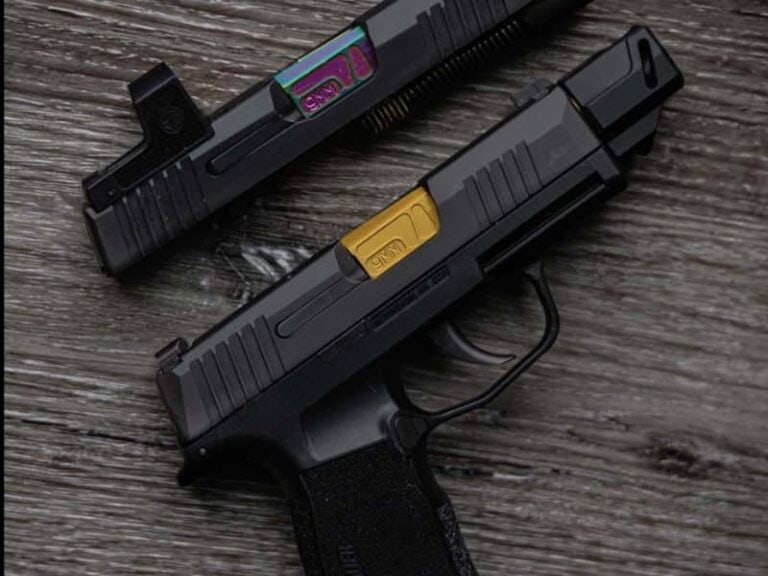
Faxon Firearms, a leader in the firearms industry, is proud to announce the release of its new EXOS Pistol Compensator, designed to significantly enhance the performance of the…
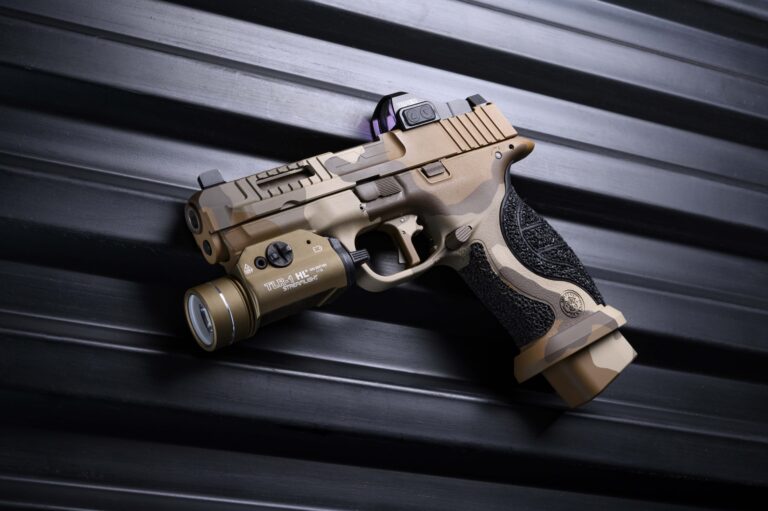
When Smith & Wesson first released its line of polymer striker-fire M&P pistols back in 2005, Glock was by far the reigning favorite among polymer pistol shooters. For…
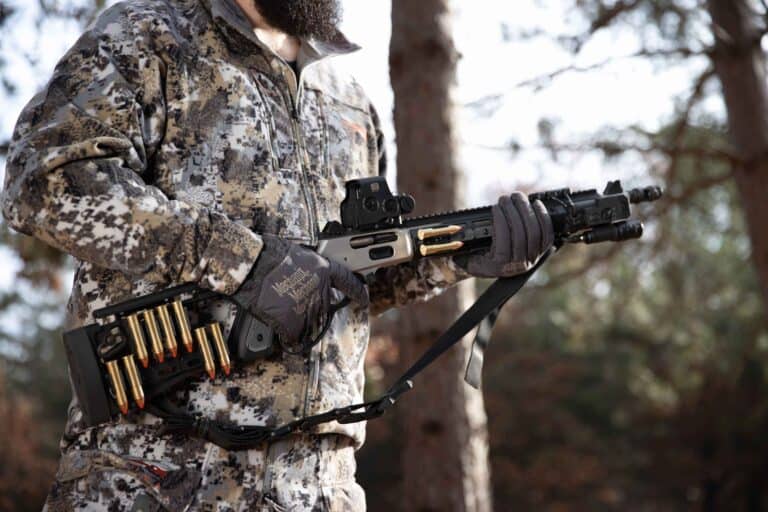
• Based on a Marlin Model 1895 SBL• Outfitted with Midwest Industries lever action upgrades• Further tuned & modified by Mad Pig Customs In the ever-evolving world of…
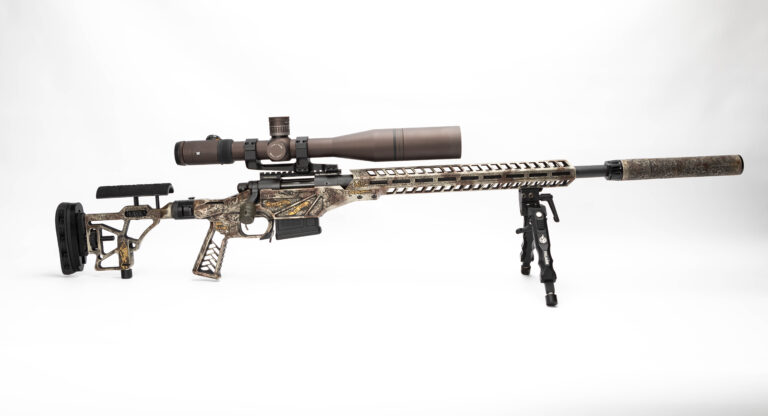
It’s no stretch of the imagination to say every firearm created since the advent of gunpowder has attracted a dedicated following. Makes, individual models, sub-groupings of each of…
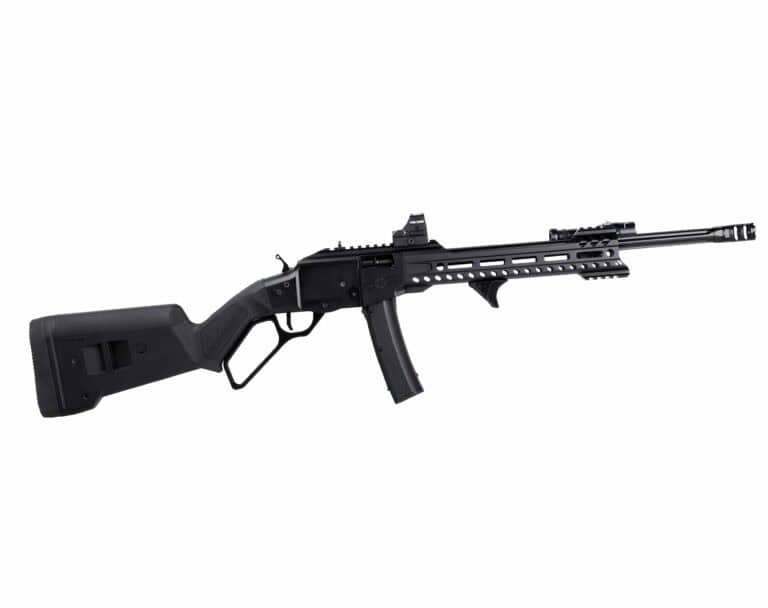
It’s no secret that lever-action rifles are the latest hotness in firearms, and it’s easy to understand why. They’re fun to handle and to shoot. Not to be…
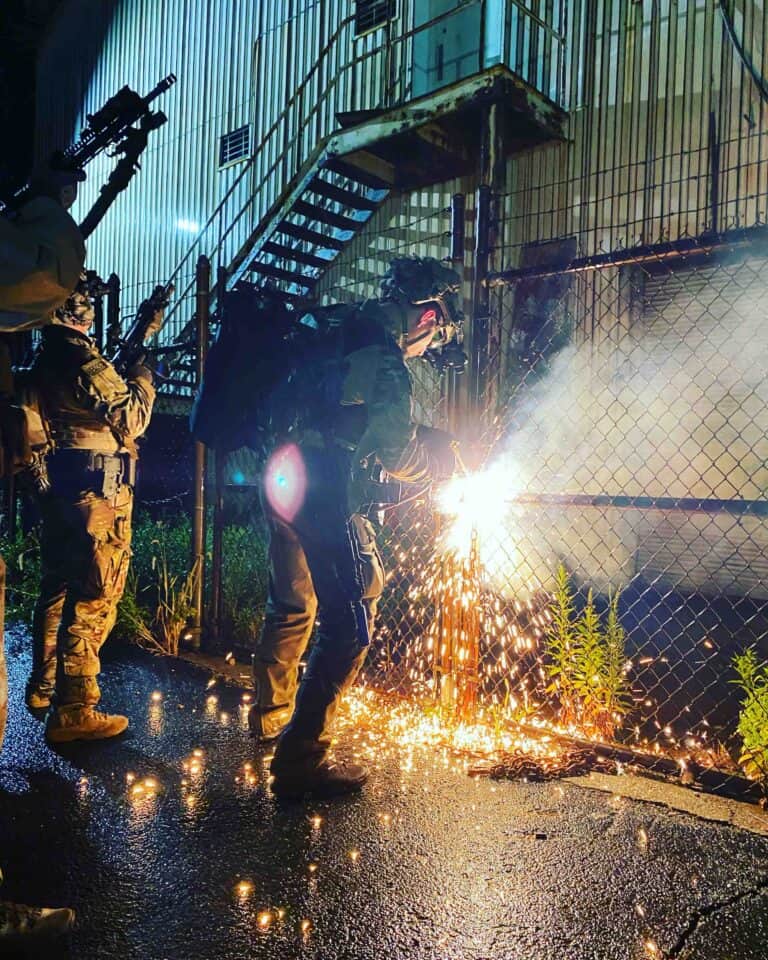
We’ve all let complacency get the better of us at times. After performing a task repeatedly with the same result, it’s natural to develop a complacent attitude. We…
© 2025 UN12 Magazine
© 2025 UN12 Magazine
Wait! Don’t forget to